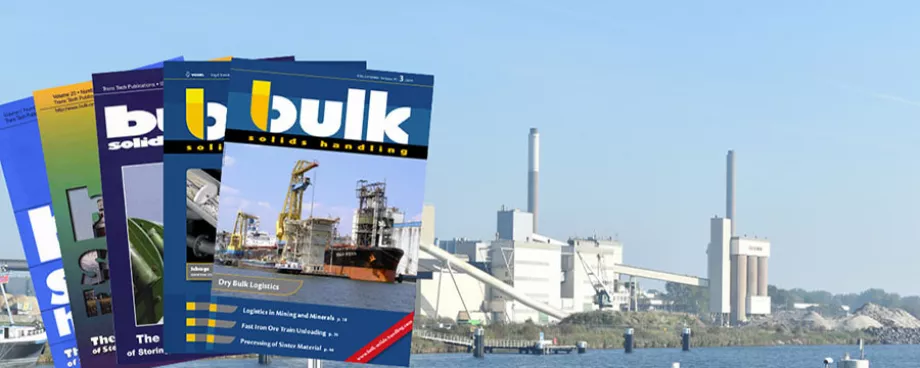The minimum transition length is given as a function of idler geometry, the elastic modulus of the bel and the high and low belt tensions within the transition.
By stipulating high and low tension limits as a function of the ultimate belt strength and by accepting tha the elastic modulus can be expressed as a function of the ultimate belt strength, the derived formulae can be simplified and graphs of transition length versus belt tension can be produced.
At the head and tail ends of the conveyor there is a transition where the belt profile changes from the flat to troughed form. The distance over which this change takes place is known as the transition length. Within the transition the stress in some sections of the belt will increase and in other sections it will decrease. The transition length must therefore be adequate to keep the high and tow stresses within acceptable limits.
The importance of correct design of the belt transition is often overlooked by engineers and many transitions are either too short, causing distress to the belt, or the belt is incorrectly supported by the transition idlers,. so that the belt is bent around only one idler. Photographs 1 and 2 show transitions on two conveyors which illustrate these problems.
Information relating to the minimum transition length varies considerably between manufacturers manuals and other text books. There is also an International Standard ISO 5293 1981 (E) which gives formulae for the transition length on three equal length idlers. This ISO Standard and most of the information in manuals and text books appears to be based on incorrect assumptions regarding the belt stresses in the transition area. There is therefore a need for some general formulae which reflect the actual stress conditions and these formulae should also be applicable to idlers which do not necessarily have three equal length rollers.
This document has been prepared to give engineers and draftsmen an understanding of both the theory of transition geometry and some practical formulae which will assist the designer in selecting the correct transition length and the form of the intermediate transition idlers.
■




















